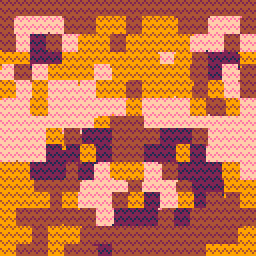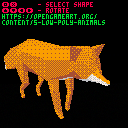A long time ago I read a page that explained the "s-buffer" technique for hidden surface determination. I can't find it anymore, sadly.
The general idea is to keep an array of "segments" per each horizontal line in the display (making 128 arrays total). A segment is just a left x-coordinate, a right x-coordinate, left+right z-depths, and colour. Each array of segments is kept in order.
The polygon filling code is my own method, but it was largely adapted from the method outlined in the graphics programming black book: https://www.jagregory.com/abrash-black-book/#chapter-38-the-polygon-primeval
A few extra notes:
- You can get 30 FPS with about 75 visible polygons











 10 comments
10 comments